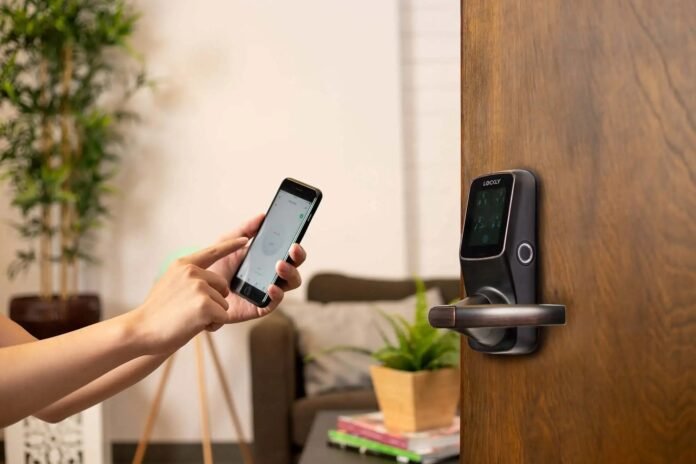The smart home industry is poised for major advancements in 2025, particularly in the realm of smart locks. With a growing demand for more secure, efficient, and user-friendly ways to manage home access, new innovations in lock technology are set to revolutionize the way we think about home security. One of the most anticipated developments is the adoption of Aliro protocol, which will enable smartphones and wearables to function as digital keys for smart locks, offering unparalleled convenience and enhanced security.
Aliro Protocol: The Key to Hands-Free Access
The Aliro protocol represents a groundbreaking shift in the functionality of smart locks. This protocol will allow users to open doors without touching a key, simply by using their smartphones or wearable devices equipped with Ultra-Wideband (UWB) technology. UWB is a wireless communication technology that allows for accurate, short-range communication between devices, enabling a more secure and seamless unlocking experience.
What makes this development particularly exciting is the hands-free functionality it promises. No more fumbling for keys or worrying about lost or stolen physical keys. With UWB technology, your smartphone or wearable device can unlock your door automatically when you’re within range, ensuring convenience and safety.
Improved Battery Life for Smart Locks
Along with the advancements in communication protocols, smart locks in 2025 will also feature improved battery life. As smart home devices continue to evolve, battery performance will become increasingly important. New energy-efficient technologies will ensure that smart locks last longer, requiring fewer recharges, and remain reliable over extended periods.
This improvement will not only save users time and hassle but will also reduce the need for frequent maintenance, making smart locks more convenient and cost-effective in the long run.
Better Compatibility with Smart Home Ecosystems
In addition to UWB integration and enhanced battery life, 2025’s smart locks will see greater compatibility with a variety of smart home systems. Whether you use Apple HomeKit, Google Home, or Amazon Alexa, future smart locks will integrate smoothly with your existing smart home setup, allowing for easy management and control from your smartphone or voice assistant.
This greater interoperability will make it simpler for users to manage home access in combination with other smart devices, such as security cameras, smart lights, and thermostats, creating a cohesive and intelligent home environment.
Enhanced Security and Convenience
Smart locks have always been prized for their ability to provide higher levels of security compared to traditional locks. The combination of digital keys, UWB technology, and encrypted communication will take security to the next level, offering resistance to hacking and unauthorized access. These locks will feature advanced encryption methods to ensure that your home remains safe from digital threats.
At the same time, the added convenience of hands-free operation and longer-lasting batteries will make daily life easier and more efficient. No longer will you need to worry about losing keys or forgetting codes—your devices will automatically provide access when you need it most.
Conclusion
As we approach 2025, the smart lock industry is set for a transformative year. With the introduction of Aliro protocol, UWB technology, and smarter, more efficient locks, homeowners will enjoy a new level of security, convenience, and integration with their smart home systems. Whether you’re a tech enthusiast or someone simply looking for more efficient ways to secure your home, the future of smart locks offers something for everyone.
Stay ahead of the curve and embrace the next generation of home security with smart locks that offer hands-free access, enhanced security, and greater compatibility with all your smart devices.



